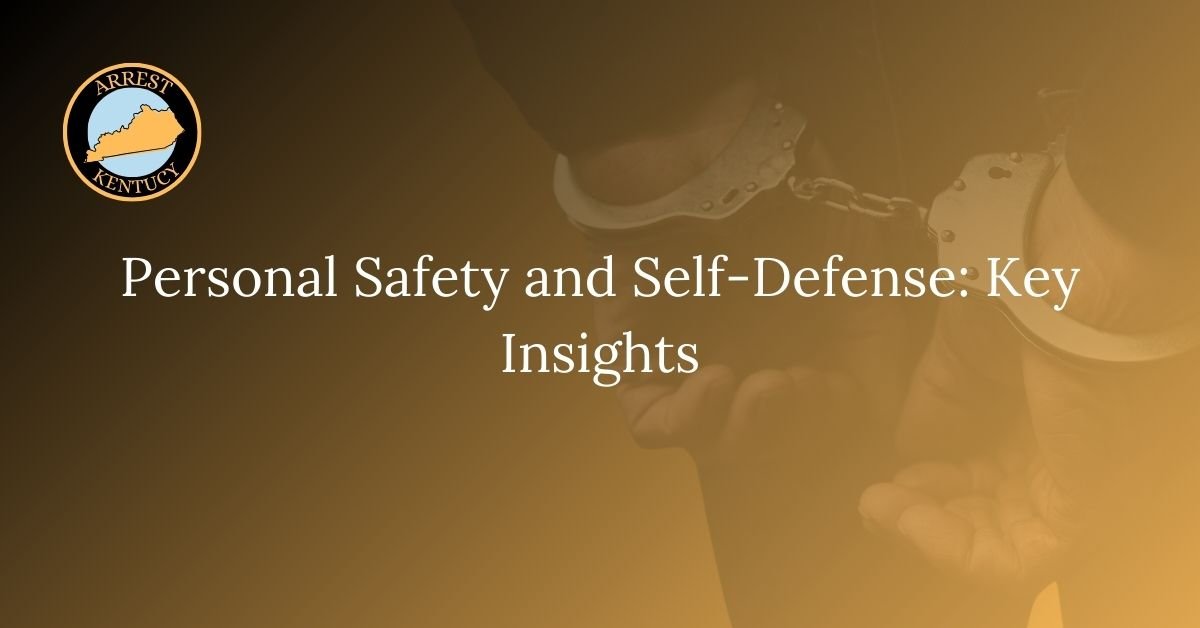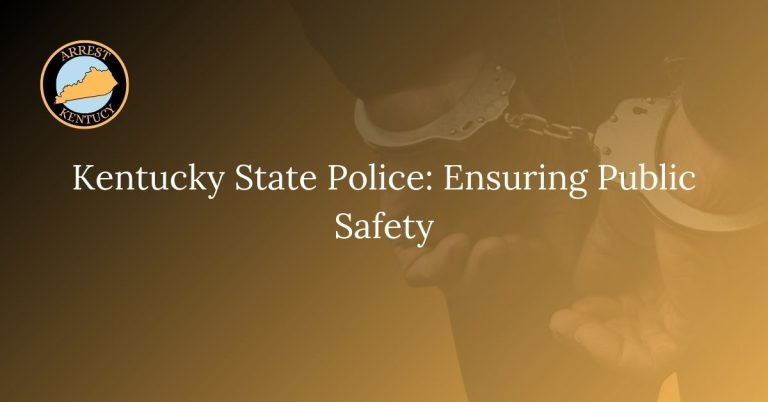Personal Safety and Self-Defense: Key Insights

In today’s rapidly changing world, ensuring personal safety has become a paramount concern for individuals from all walks of life. Whether you’re walking alone at night, commuting, or engaging in everyday activities, being equipped with effective self-defense skills and personal safety strategies is crucial. These skills empower you to protect yourself against potential threats and dangers. This comprehensive guide aims to provide you with essential knowledge and practical strategies to enhance your safety and confidence. By understanding and applying these techniques, you can navigate your daily life with a greater sense of security and preparedness.
As society evolves, so too do the risks and challenges that individuals face. The growing need for self-defense and personal safety awareness is evident. This guide explores a range of topics, from fundamental self-defense techniques to improving situational awareness, offering valuable insights to help you make informed decisions and adopt necessary precautions. By staying informed and proactive, you can better protect yourself and ensure your well-being in various environments and situations.
Mastering Self-Defense Skills
Self-defense techniques are invaluable tools that enable individuals to protect themselves from physical attacks. Mastering these techniques not only provides a sense of empowerment but also equips you with the skills needed to respond effectively in threatening situations. This section delves into various self-defense methods, offering practical guidance on how to execute these techniques with confidence and precision. Understanding how to perform these maneuvers correctly can significantly enhance your ability to handle potential threats and ensure your safety.
Learning self-defense involves more than just physical training; it requires mental preparedness and practice. By familiarizing yourself with different techniques, you can develop the ability to react quickly and effectively in dangerous situations. This section aims to provide you with the knowledge and skills necessary to defend yourself, thereby increasing your overall confidence and readiness to face potential threats.
Recognizing the Need for Personal Safety
Being proactive about personal safety is essential for minimizing risks and protecting yourself. Heightening awareness of potential threats allows individuals to take appropriate precautions and reduce vulnerabilities. This section emphasizes the importance of recognizing and addressing potential risks before they escalate into more significant problems. By understanding and acknowledging the need for preparedness, you can take proactive measures to ensure your well-being in various environments.
Personal safety awareness involves assessing your surroundings, understanding potential risks, and taking necessary actions to protect yourself. This section highlights the importance of being vigilant and prepared, offering practical tips on how to stay safe and secure. By adopting a proactive approach to personal safety, you can significantly reduce the likelihood of encountering dangerous situations.
Building a Strong Safety Mindset
A strong safety mindset is crucial for effective self-defense. Cultivating confidence and assertiveness helps you set clear boundaries and respond decisively in critical situations. Developing a mindset that prioritizes personal safety involves trusting your instincts and remaining alert to potential dangers. This section explores the importance of mental preparedness and the role it plays in self-defense.
By building a strong safety mindset, you can enhance your ability to recognize and address potentially dangerous situations. This involves not only physical readiness but also mental and emotional preparedness. Embracing a proactive and confident attitude towards personal safety can significantly improve your overall ability to protect yourself and respond to threats.
Essential Self-Defense Techniques
Understanding and applying essential self-defense techniques is crucial for effective self-protection. This section covers practical self-defense maneuvers, including methods to escape from grabs and holds, as well as striking techniques for self-defense. These fundamental techniques form the foundation of self-defense and can be employed to create distance from an attacker or neutralize their threats.
Learning these techniques involves practicing specific movements and strategies that can help you respond effectively in various scenarios. This section provides detailed guidance on how to perform these maneuvers with confidence and precision. By mastering these basic techniques, you can enhance your ability to defend yourself and ensure your safety in challenging situations.
Effective Use of Self-Defense Tools
In addition to physical techniques, self-defense tools play a significant role in enhancing personal safety. Tools such as pepper spray and personal alarms can provide valuable support in dangerous situations. This section explores the benefits and proper use of various self-defense tools, offering practical advice on how to incorporate them into your safety strategy.
Self-defense tools can serve as a non-lethal means of deterrence and help you summon assistance in emergencies. Understanding how to use these tools effectively can increase your confidence and preparedness. This section aims to provide you with the knowledge needed to select and utilize self-defense tools that can enhance your overall safety and security.
Staying Aware and Reducing Risks
Situational awareness is a critical component of personal safety. This section emphasizes the importance of staying alert and aware of your surroundings. By assessing your environment for potential hazards and threats, you can take proactive measures to minimize risks and ensure your safety.
Maintaining situational awareness involves being vigilant, observing your surroundings, and recognizing potential dangers before they become significant issues. This section offers practical tips on how to stay aware and assess your environment effectively. By developing strong situational awareness, you can better protect yourself and reduce the likelihood of encountering dangerous situations.
Protecting Yourself Online
In the digital age, safeguarding your online presence is as important as physical safety. This section covers essential practices for protecting your personal information, recognizing online scams, and maintaining cybersecurity. Online safety is a crucial aspect of overall personal security, and understanding how to navigate the digital world safely is vital.
Protecting yourself online involves adopting practices that secure your personal data and recognizing potential threats in cyberspace. This section provides practical advice on how to safeguard your online information and avoid common pitfalls. By staying informed and vigilant, you can enhance your online security and protect yourself from digital threats.
Self-Defense for At-Risk Groups
Every individual deserves the ability to protect themselves, including those in vulnerable populations. This section focuses on adapting self-defense techniques and safety strategies for seniors, individuals with disabilities, and children. Ensuring that these groups have the necessary skills and knowledge to navigate their environments safely is crucial.
Tailoring self-defense techniques to meet the specific needs of at-risk groups involves modifying approaches and strategies to fit their capabilities. This section provides guidance on how to empower these populations with effective self-defense skills and safety practices. By addressing the unique needs of vulnerable individuals, you can help them enhance their personal safety and confidence.
Frequently Asked Questions
For detailed guidance on safeguarding yourself and understanding self-defense principles, refer to the comprehensive FAQs provided in the article.
Why is self-defense training crucial?
Self-defense training is crucial because it equips individuals with the knowledge and skills needed to protect themselves in potentially dangerous situations. It helps boost confidence, improves situational awareness, and enhances physical abilities to respond effectively to threats. By undergoing self-defense training, you gain valuable tools and strategies that can make a significant difference in your ability to handle dangerous encounters.
What basic self-defense techniques should everyone know?
Basic self-defense techniques that everyone should know include effective striking methods such as punches and kicks, understanding vulnerable areas on an attacker’s body, mastering escapes from common grabs or holds, and practicing verbal de-escalation techniques. These fundamental skills form the core of self-defense and provide essential strategies for protecting yourself in various scenarios. Learning and practicing these techniques can significantly enhance your ability to respond to threats effectively.
Does self-defense include more than physical techniques?
Yes, self-defense encompasses more than just physical techniques. It involves mental preparedness, recognizing potential threats, setting boundaries, and maintaining a proactive approach to personal safety. Effective self-defense requires a combination of physical skills and mental strategies to address potential dangers and protect yourself. By integrating these aspects into your self-defense practices, you can improve your overall safety and preparedness.
Can anyone learn self-defense, regardless of age or ability?
Absolutely, self-defense can be adapted to suit individuals of all ages and physical abilities. Techniques can be modified to accommodate various capabilities, making self-defense accessible to nearly everyone. Whether you are young or old, fit or less active, there are self-defense strategies that can be tailored to your specific needs. By finding approaches that work for you, you can gain valuable skills and confidence in your ability to protect yourself.
Is it better to avoid or confront a dangerous situation?
The primary goal of self-defense is to avoid dangerous situations whenever possible. Prioritizing personal safety involves being aware of your surroundings and recognizing potential threats. If you can avoid confrontation through de-escalation or escape, that is the preferred approach. However, if avoidance is not possible, being prepared to respond effectively and safely is essential. Balancing avoidance with readiness ensures that you can protect yourself while minimizing risks.
Are there specific self-defense tips for women?
Yes, there are specific self-defense tips that can be particularly beneficial for women. These include carrying personal safety devices like pepper spray, exercising caution when alone at night, and taking self-defense classes tailored to women’s needs and potential scenarios. By adopting these strategies, women can enhance their personal safety and confidence. Self-defense classes designed for women often address common threats and provide practical techniques to handle various situations effectively.






